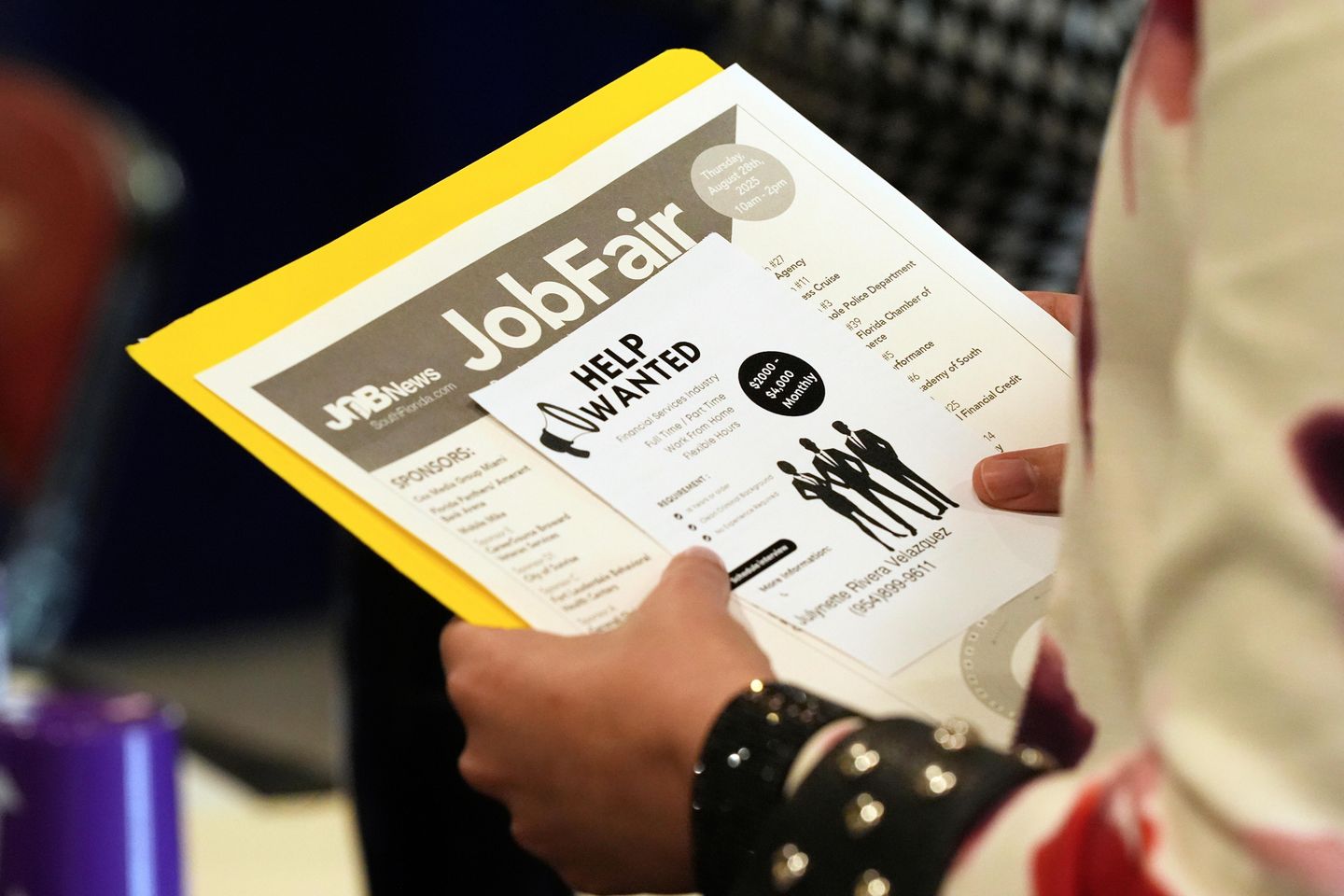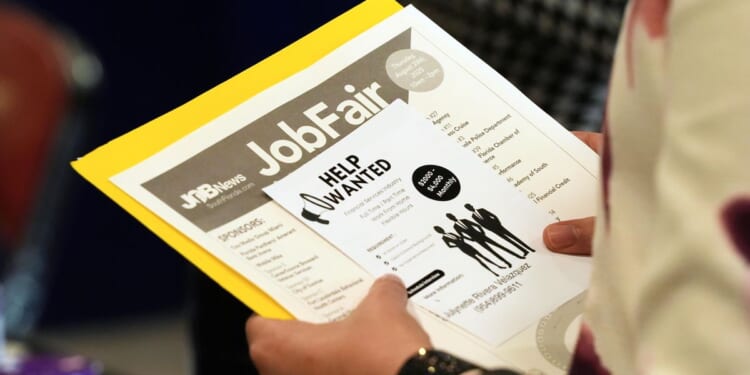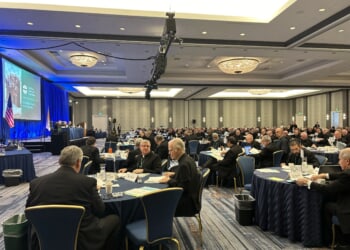
The nation’s historic hiring freeze likely will thaw in the coming year as most employers expand their workforces, according to recent reports.
The jobs website Zip Recruiter found that 63% of the more than 1,500 hiring bosses it surveyed in September expected to expand their payrolls in 2026, loosening the job market for the first time since President Trump returned to the White House.
That’s down from 76% of those surveyed in 2024 who expected to expand their workforces this year. But it’s a rosier picture than the company’s first annual employer survey in 2023, when 57% of hiring bosses were unable to find qualified applicants.
The survey found small businesses and entry-level positions leading the expected hiring rebound, building on a post-pandemic decline in job listings requiring a college education.
Among the employers surveyed, 31.5% said most new hires would be entry-level.
“Our research suggests ‘The Great Freeze’ is giving way to ’The Great Thaw,’ and the most prepared employers are already taking action,” Nicole Bachaud, Zip Recruiter’s labor economist, said in a statement. “We’re seeing businesses ramp up entry-level hiring, drop degree requirements and incorporate skills assessments into their process.”
The Santa Monica, California-based company noted that employee turnover dropped from 177% in 2023 to just 50% this year, reflecting a historic hiring freeze as businesses and workers alike strove to avoid “unnecessary risk.”
A summary of the survey’s findings noted that the federal government shutdown and additional Trump administration tariffs “could further delay” the hiring rebound.
Reached for comment, several workforce and economic experts concurred that employers are quietly ending the hiring freeze they imposed after Mr. Trump returned to office in January.
They attributed that freeze to rising labor costs and worries over the inflationary impact of the president’s plans to raise duties on imported goods from dozens of countries.
“Companies spent the last year right-sizing their workforce in anticipation of any type of crisis or correction,” said Sheldon Arora, CEO of StaffDNA, a Texas-based health care employment agency. “But 11 months into the Trump administration, we’re all learning not to react to every statement and economic policy.”
The American Staffing Association, a recruiting industry trade group, has now tracked six straight weeks of increased hiring activity.
Signs of life
The group said Monday that while part of that comes from seasonal hiring, the rest comes from expectations of lower labor costs due to tax-code changes and two straight months of interest rate cuts by the Federal Reserve.
“The labor market is expected to regain some steam in the new year as tailwinds like lower interest rates and changes to the tax code lower headcount costs for employers,” said Noah Yosif, chief economist and head of research at the American Staffing Association.
He said that another sign of creeping labor demand is a recent uptick in temporary and contract hiring, “which often recovers before a broader surge in labor market activity.”
Officials at Connext Global, a Honolulu-based company that helps small businesses outsource some hiring to other countries, said a “meaningful pickup” in employment activity started between July and September.
“We expect to see more hiring in healthcare operations, finance and accounting and IT or operations roles that oversee or quality-check automated workflows,” said Marc Sylvester, a Connext Global vice president. “Small and medium-sized businesses are resuming targeted hiring sooner, often augmenting U.S. teams with dedicated global staff to scale efficiently.”
In a statement to The Washington Times on Monday, White House spokesman Kush Desai said the predicted hiring rebound proves that the America First agenda “continues to pay off” for citizens.
“Joe Biden’s inflation crisis has cooled, and now job growth looks promising with trillions in investments pouring in to make and hire in America,” Mr. Desai said. “President Trump delivered a historic economy in his first term, and Americans can rest assured that the best is yet to come in his second term.”
But other analysts cautioned that increased reliance on automation and artificial intelligence could still reduce overall headcount in retail and customer service next year.
“It is more than a hiring thaw,” said Angelica Gianchandani, a marketing instructor at New York University. “It is a transformation. As AI becomes embedded in operations, leaders are realizing that people who can collaborate, communicate, and innovate are the ones who will drive the next wave of growth.”
Effects of automation
Zip Recruiter noted that 73.7% of small and medium-sized businesses it surveyed agreed that artificial intelligence could “streamline recruiting,” compared with 67.6% of larger “enterprise businesses.”
The survey also found that 47.1% of smaller businesses used AI to automate some hiring processes in the past year, compared with just 35% of larger employers.
It remains to be seen whether hiring levels increase in the new year as more companies automate some services and operations.
Major companies such as Amazon, Microsoft, and Intel have laid off tens of thousands of employees this year as they adopt AI for some operations.
“Yes, you’re seeing layoffs in big tech because of AI, but at the same time, other industries can’t find enough workers,” said Joe Camberato of National Business Capital, a New York-based business loan and finance company. “The reality is that people need to adapt and learn new skills because there’s opportunity out there.”
Andrew Crapuchettes, CEO of the right-leaning jobs board RedBalloon, said Trump policy changes would create new opportunities for applicants who can work with AI.
“Small business owners know they still need humans and human innovation to stay competitive in a future-forward economy,” Mr. Crapuchettes said. “With a more confident outlook for 2026, many are preparing to expand their teams, even as AI continues to advance.”
Others insisted that hiring would not truly recover until the Trump administration ends its trade wars with China, Europe, Canada and Mexico.
“The current administration has variously threatened tariffs, then enacted them, then faced foreign retaliation, then pulled back, then returned to square one and started the cycle all over,” said Sean Higgins, an analyst at the libertarian Competitive Enterprise Institute. “For the economy to rebound, we need stability.”
In the Zip Recruiter survey published late last month, 38% of employers said they had replaced some roles with automation. And 25.8% predicted that technological advancements would decrease their overall headcount, compared with 19.3% who expected headcount to increase.
As of August, the Bureau of Labor Statistics counted 7.2 million job openings, statistically unchanged from the pre-pandemic baseline of 7.1 million openings in August 2019.
Revana Sharfuddin, a research fellow at George Mason University’s free-market Mercatus Center, noted that the job search website Indeed had only about 2.5% more job listings last month than before COVID-19.
“Firms are navigating unusual uncertainty [about] tariffs, immigration-related labor-supply shifts, and an AI adoption wave that some employers say is tempering near-term hiring even as they plan complementary roles,” Ms. Sharfuddin said. “While improving macro conditions and policy easing support a labor market thaw, it is unlikely that we will see immediate hiring surges.”


![Scott Bessent Explains The Big Picture Everyone is Missing During the Shutdown [WATCH]](https://www.right2024.com/wp-content/uploads/2025/11/Scott-Bessent-Explains-The-Big-Picture-Everyone-is-Missing-During-350x250.jpg)













